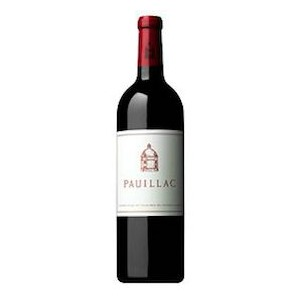
One of the five original first growth estates of the Médoc, and amongst the most prestigious properties of the entire Bordeaux region, Château Latour produces powerful, well-structured wines with excellent ageing potential. The estate is renowned not only for its superb quality, but also for its remarkable consistency, even in difficult years.
Located at the southern tip of the Pauillac appellation, close to its border with Saint-Julien, Latour’s long history dates back to the mid-fourteenth century, when the original Saint-Lambert tower (which still adorns its labels) was built. The tower’s strategic position close to the Gironde estuary, helped to guard the town from attack during the One Hundred Years War, and subsequently, the same location has served to protect the vines of Latour from winter frosts, and to moderate extremes in temperature over the ensuring centuries. Vines have been planted on this site continuously since then, and although some of the early wines received positive acclaim on a local level, it was not until the seventeenth century that Latour’s reputation for viticultural excellence began to establish the property amongst the Bordeaux elite. The estate’s enviable location above the Gironde, and the maritime influence of the Atlantic, ensures an excellent micro-climate for grape cultivation. In particular, the warm summers characterised by the variation in day and night-time temperatures, allows the grapes to ripen quickly whilst retaining their freshness and acidity. The ninety-two hectares of vine here can be divided into two distinct categories - the forty-seven which occupy the free-draining hilltops and slopes around the château itself - appropriately named the ‘Enclos’, and the remainder, on beautiful, bounteous plots such as Piñada, Petit Batailley and St. Anne. Typical of Pauillac properties, Cabernet Sauvignon accounts for the lion’s share of the vineyard area with around three quarters of all vines, Merlot with a little over one fifth, and there is also a tiny fraction of Cabernet Franc and Petit Verdot. The Grand Vin of Château Latour is produced from the vines at the very heart of the Enclos where the permeable gravel top soil and clay-rich subsoil affords the principal grape its finest, most expressive terroir. The Cabernet Sauvignon grown here brings its characteristic colour and tannic structure to the final blend. Whereas lower down, on the gentle slopes of the Enclos, Merlot thrives in the cooler conditions and soils of shallower gravel, contributing body and roundness to the wines. Whilst the exact proportions of each grape variety selected for inclusion in the final blend varies with every vintage, Cabernet Sauvignon always accounts for at least 90%, with Merlot (around 8%) and a small amount of Petit Verdot - generally preferred to Cabernet Franc - making up the remainder. A rigorous selection process, precise vinification practices including separate tanks for each parcel and a period of ageing in 100% new oak before bottling, results in a rich, colourful and compelling wine that will continue to evolve over many years. In addition to its Grand Vin, Latour produces two further wines - its second label, ‘Les Forts de Latour’ and, for the last thirty years, a third wine named ‘Le Pauillac de Château Latour’ or simply ‘Pauillac’. Whilst the Grand Vin is made from the fruits of the old vines of the Enclos (some of which are a century old), the second is drawn from vines planted in the sandy, gravel at its edges and from other Cru Classé parcels in the Pauillac appellation. The third wine is largely from younger vines and hence is more approachable in its youth. Both the second and third wines of Latour are produced with the same passion for craft and meticulous attention to detail as the Grand Vin, however there are noticeable differences in the percentage of new barrels used in ageing, and the proportion of Merlot present in the final blend (approximately 25% for Les Forts, as much as 45% for Pauillac). Bought by François Pinault in 1993, Châteaux Latour has seen extensive renovations over the last twenty-five years, including improvements to its winery and technical team and a commitment to sustainable practice. Under the chairmanship of Frédéric Engerer, the team of nearly seventy employees demonstrate an insatiable eagerness to make tiny adjustments and embrace new technologies, in the eternal quest for perfection.

